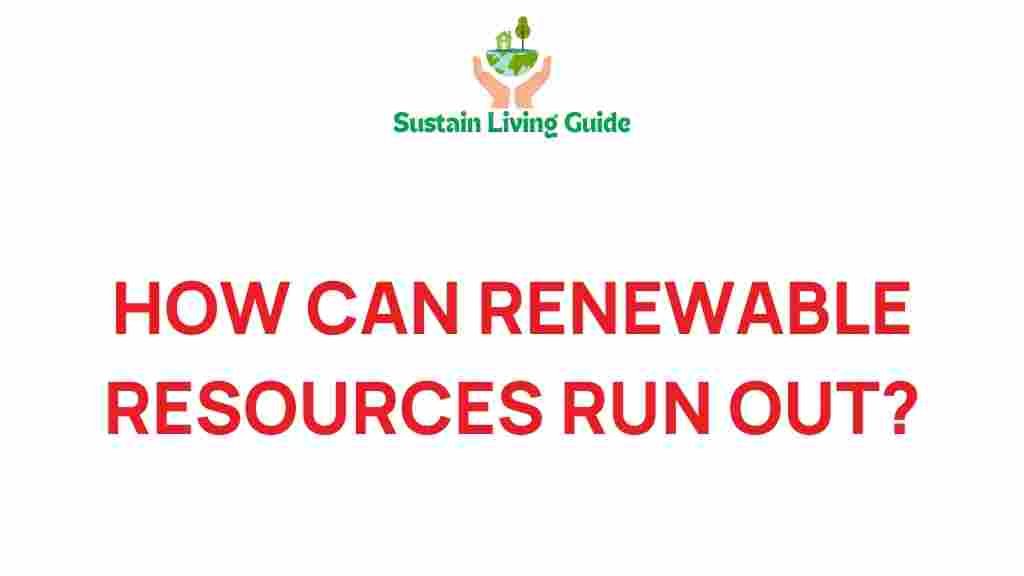The Paradox of Abundance: Can Renewable Resources Truly Deplete?
In an era defined by the pressing need for sustainable energy solutions, the concept of renewable resources has gained significant traction. These resources, which include solar, wind, hydro, and biomass energy, are often touted as the answers to our environmental crises. However, the paradox lies in the fact that even renewable resources, despite their abundance, can face depletion. This article explores the complexities surrounding renewable resources, their sustainability, and the potential for depletion under certain circumstances.
Understanding Renewable Resources
Renewable resources are naturally replenished over time and include:
- Solar Energy: Harnessed from sunlight, this energy source has immense potential, but its availability can be limited by weather conditions and geographical location.
- Wind Energy: Generated by wind turbines, wind energy is abundant in certain areas but can be inconsistent depending on climatic factors.
- Hydropower: Utilizing water flow, hydropower is a significant energy source. However, changes in rainfall patterns and drought can impact its effectiveness.
- Biomass: Organic materials used for energy can be replenished, yet overharvesting can lead to soil depletion and loss of biodiversity.
While these resources are inherently renewable, their capacity to sustain human demand is not limitless. Understanding the factors that contribute to their depletion is crucial for developing sustainable practices.
The Factors Leading to Depletion of Renewable Resources
Several factors can lead to the depletion of renewable resources:
- Overconsumption: As global energy demands rise, the rate of consumption of renewable resources can exceed their natural replenishment rates.
- Environmental Changes: Climate change can impact the availability of resources, such as altering wind patterns or altering rainfall necessary for hydropower.
- Technological Limitations: Current technologies may not efficiently capture or utilize renewable resources, leading to wastage.
- Policy and Management Issues: Poor management of renewable resources can lead to unsustainable practices, threatening their availability.
The Step-by-Step Process of Sustainable Management
To ensure that renewable resources remain abundant and sustainable, it is essential to adopt a systematic approach to their management. Here’s a step-by-step process:
- Assessment of Resources: Conduct a thorough analysis of available renewable resources in a region, taking into account environmental factors and potential energy output.
- Setting Consumption Limits: Establish guidelines for sustainable consumption rates to prevent overextraction and depletion.
- Investment in Technology: Invest in advanced technologies that improve the efficiency of renewable energy capture and usage.
- Policy Development: Create policies that promote sustainable practices and encourage the conservation of renewable resources.
- Monitoring and Evaluation: Continuously monitor the health and availability of renewable resources, making adjustments to management strategies as needed.
Troubleshooting Common Issues with Renewable Resources
Despite the best efforts to manage renewable resources sustainably, several challenges can arise. Here are some common issues and troubleshooting tips:
- Issue: Inconsistent energy supply from solar or wind sources.
- Solution: Invest in energy storage technologies, such as batteries, to store excess energy generated during peak production times.
- Issue: Decreased energy output from hydropower due to drought.
- Solution: Diversify energy sources and integrate other renewables, such as solar and wind, to reduce dependence on hydropower.
- Issue: Overreliance on biomass leading to soil degradation.
- Solution: Implement crop rotation and sustainable agricultural practices to maintain soil health while utilizing biomass.
For more detailed information on troubleshooting renewable energy systems, check out this comprehensive guide.
Conclusion: Navigating the Paradox of Abundance
The paradox of renewable resources highlights the importance of understanding their sustainability limits. While these resources are essential for a sustainable future, their management requires careful consideration to prevent depletion. By adopting systematic management strategies and addressing common issues, we can ensure that renewable resources remain a viable and abundant energy source for generations to come.
As we move towards a more sustainable future, it is crucial to educate ourselves about the complexities of renewable resources. By doing so, we can contribute to their preservation and ensure a balanced approach to energy consumption. For more insights into renewable energy solutions, visit this resource center.
In summary, while renewable resources offer immense potential, their sustainability depends on our collective actions and commitment to responsible management practices. The challenge lies not only in harnessing these resources but also in ensuring that they continue to thrive in a changing world.
This article is in the category Eco-friendly and created by SustainLivingGuide Team
